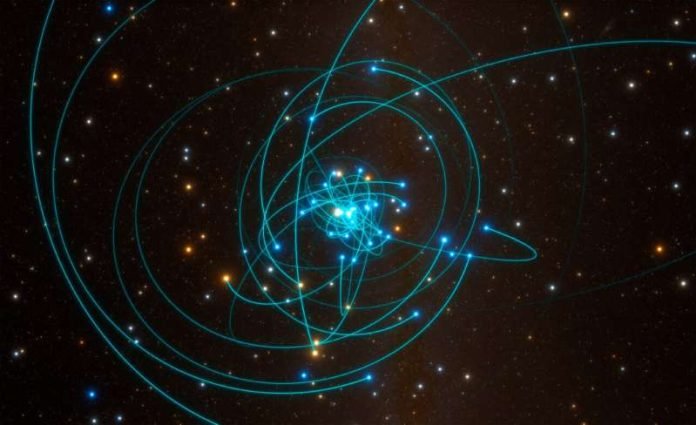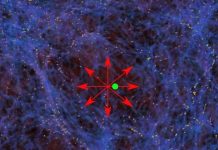
In the bustling heart of our Milky Way galaxy, there’s a place where stars live fast and die young, in a cosmic dance governed by the gravitational pull of the supermassive black hole known as Sagittarius A* (Sgr A*).
This is the scene set by recent research from Northwestern University, which delves into the violent lives of stars in this extreme environment.
Using a novel simulation, astrophysicists have traced the chaotic paths of 1,000 stars whirling around Sgr A*, shedding light on their fates after enduring high-speed collisions.
Imagine a place so crowded with stars that it resembles a rush-hour subway station, where stars zoom around at incredible speeds, often colliding or nearly missing each other.
This is the reality for stars near Sgr A*, where the density of celestial bodies and their breakneck speeds make collisions an everyday occurrence.
According to the research led by Sanaea C. Rose, these stellar encounters can strip stars of their mass, leaving behind odd, low-mass stars, or cause them to merge into massive, youthful-looking stars.
Rose, a Lindheimer Postdoctoral Fellow at Northwestern’s Center for Interdisciplinary Exploration and Research in Astrophysics (CIERA), describes these interactions not as head-on crashes but more like “violent high fives,” where stars graze each other, shedding some of their material in the process.
Within just 0.01 parsecs of Sgr A*, stars can undergo such encounters, resulting in the creation of bizarre, stripped-down stars that bear little resemblance to their former selves.
Further from the black hole, where stars move at slower speeds, these celestial bodies can merge after collision, forming massive stars that appear deceptively young.
These “zombie stars,” as Rose whimsically describes them, have gorged on their neighbors to become rejuvenated, masquerading as members of a younger generation.
However, their newfound youth comes with a catch: a significantly shortened lifespan. These massive stars burn through their hydrogen fuel at a prodigious rate, leading to their swift demise.
Rose’s research, which she presented at the American Physical Society’s April meeting, not only offers a glimpse into the violent interactions at the galactic center but also provides insights into the formation and evolution of our Milky Way.
By studying this extreme environment, scientists can learn about the processes that may have contributed to the assembly of the galaxy’s core.
The simulations carried out by Rose and her team highlight the unique conditions surrounding Sgr A*, where the usual rules of stellar behavior do not apply.
In this extraordinary setting, stars undergo transformations that are both violent and beautiful, revealing a side of the universe that is both fascinating and fundamentally different from the more tranquil neighborhood of our solar system.
Through their work, we gain a deeper understanding of the Milky Way’s heart, a place where stars live out their most dramatic moments against the backdrop of an insatiable supermassive black hole.
The research findings can be found in The Astrophysical Journal Letters.
Copyright © 2024 Knowridge Science Report. All rights reserved.



